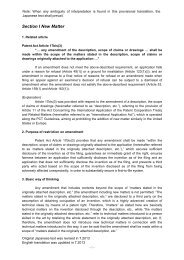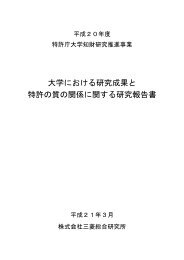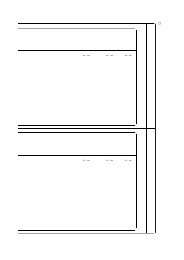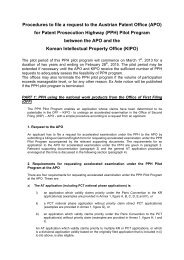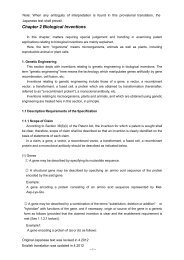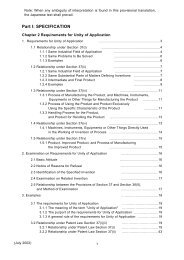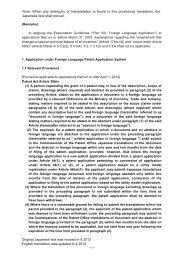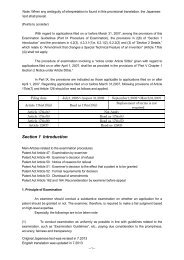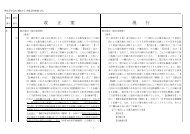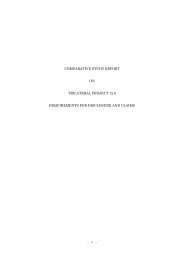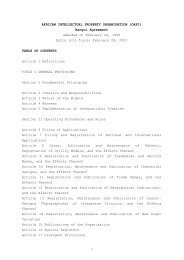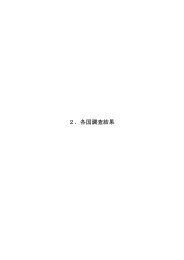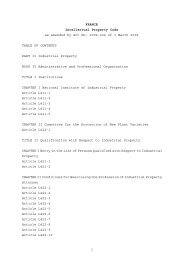Chapter 2 Novelty and Inventive Step - Japan Patent Office
Chapter 2 Novelty and Inventive Step - Japan Patent Office
Chapter 2 Novelty and Inventive Step - Japan Patent Office
Create successful ePaper yourself
Turn your PDF publications into a flip-book with our unique Google optimized e-Paper software.
Part II <strong>Chapter</strong> 2 <strong>Novelty</strong> <strong>and</strong> <strong>Inventive</strong> <strong>Step</strong><br />
(3) Instead of the approaches in said (1) <strong>and</strong> 1.5.3(3), matters in cited publications <strong>and</strong><br />
matters used to specify the inventions in the claimed inventions are compared to define the<br />
corresponding <strong>and</strong> differing points by interpreting these matters based on the common general<br />
knowledge as of the filing. However, the results after this comparison should not differ from those<br />
from the approaches in said (1) <strong>and</strong> 1.5.3(3).<br />
(4) Combinations of two or more independent cited inventions should not be compared to<br />
the claimed inventions.<br />
1.5.5 Determining the <strong>Novelty</strong> of the Claimed Inventions<br />
(1) When the difference between the matters used to specify the invention in the claimed<br />
inventions themselves <strong>and</strong> those used to specify the cited inventions is not found after the<br />
comparison, the claimed inventions are not novel. Any difference between these two matters<br />
involves the novelty of the claimed inventions.<br />
(2) The claimed inventions with formal or substantial alternatives Note 1 for defining an<br />
invention for which a patent is sought are not considered to be novel when any difference<br />
between the claimed inventions, in which one of the alternatives is presumed to be an aspect to<br />
define the invention, <strong>and</strong> the cited inventions is not found Note 2 .<br />
Note 1: The term "formal alternatives" means descriptions in a style that makes it apparent that<br />
the claims are alternatives, such as claims described in the Markush form or multiple dependent<br />
form claims citing other claims alternatively.<br />
The term "substantial alternatives" means descriptions provided to substantially include<br />
more specific aspects of a limited number of arts using comprehensive expressions. The<br />
"substantial alternatives" are determined by the claims as well as specifications, drawings, <strong>and</strong><br />
the common general knowledge as of the filing, such as claims providing the description "alkyl<br />
groups with C1 – C10 (the number of carbons)," which is a comprehensive description including<br />
methyl groups, ethyl groups, <strong>and</strong> other groups.<br />
On the other h<strong>and</strong>, the term "thermoplastic resin," for example, is not a comprehensive<br />
expression that covers specific concepts of the "thermoplastic resin" unless it should be<br />
interpreted exactly based on the specifications, drawings, <strong>and</strong> common general knowledge as of<br />
the filing, such as definitions described in the detailed description of the invention, <strong>and</strong> it should<br />
be noted that this term is not included in the substantial alternatives. Accordingly, the concept<br />
"thermoplastic resin" includes an unspecific number of specific concepts, such as polyethylene or<br />
polypropylene, <strong>and</strong> it is understood to be a generic concept specified by the characteristic shared<br />
by the specific concepts, such as "thermoplasticity" for the "thermoplastic resin."<br />
Note 2: This approach does not relate to the timing when prior art searches are finished. For<br />
details, see "Part IX How to Proceed the Examinations."<br />
(3) Claims defining products by functions or characteristics<br />
I. Claims providing descriptions for defining products by functions or characteristics, which<br />
are included in the following (i) or (ii), may be difficult to compare to the cited inventions. For<br />
these claims, the examiners shall send a notice of the reasons for refusal for the lack of novelty<br />
when they have a reasonable doubt that the products in the claimed inventions <strong>and</strong> cited<br />
13



